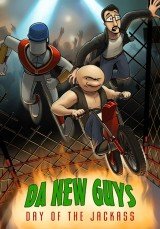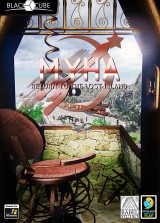Review for SCARF
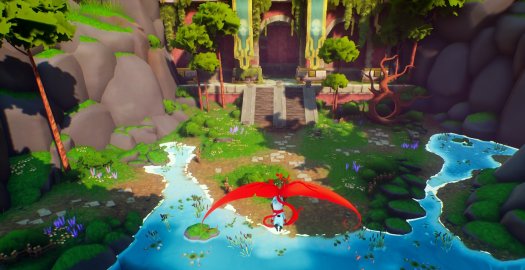
Even in the coldest of Canadian winter climes I’ve never been one to wear a scarf. Then again, I’ve never had a scarf that was really a living red dragon-like creature with transformative abilities until now. That’s the hook of the appropriately named SCARF, a 3D puzzle-platformer from Uprising Studios whose influence (both sartorial and otherwise) was clearly the 2013 classic Journey but whose gameplay also shares elements in common with the likes of RiME and Omno. It makes for a largely pleasant time and certainly looks the part, with beautiful hub-based environments to explore by land, air and (sort of) sea, though some finicky mechanics and a few questionable design decisions leave it slightly worse for wear than its more acclaimed predecessors.
The story begins with the literal birth of a creature of light who has come to save the world from the “cruel ones” who destroyed the cosmic mother dragon and used her “threads” to create portals to other dimensions, leaving her surviving young one an orphan. This wispy dragon child, more scarf-like than animal, beckons the little saviour to a lovely desert oasis with four inactive portals. It then attaches itself gracefully around the protagonist’s neck, billowing gently behind in the breeze. But this is no ordinary sentient neckwear, as it learns over time how to shapeshift into useful new abilities for its host, including wings to boost a double-jump, an elastic to slingshot across long distances, and even turning into a glider to let you soar through the air. You’re going to need all of them to overcome the many obstacles in your path, though some far fewer than others.
Your scarlet accoutrement acquires these new powers by absorbing the life force of small creatures you encounter in an unsettlingly predatory way. But that’s okay because you’re … the good guys? You’ll have reason to question the truth as two competing narratives begin to emerge, although they’re both so cryptic and disjointed that you’ll likely just end up being baffled, if you care enough to think about them at all. Most are conveyed through brief painterly cutscenes narrated with the appropriate gravitas, or pieced together from various murals and other wall art discovered along the way, many of which are easy to miss and leave you even more bewildered. Fortunately you can just ignore the story and get on with the main crux of the experience – the gameplay – right? Wrong, for reasons I’ll come to shortly.
The gameplay, of course, is the primary focus here, and it’s generally successful in providing an entertaining five or six hours of puzzle-solving and scarf-powered platforming. Playable with both keyboard/mouse and controller but more comfortable and intuitive with the latter, the game has three distinct quasi open worlds to explore in sequence, each with its own thematic biome: ocean, desert and forest. All are gorgeously designed with vivid colours and impressive vistas of waterfalls, canyons, and lush green valleys, among others, as well as a handful of majestic courtyards with ancient temple ruins that provide the bulk of the challenges you’ll face. Often you’ll need to collect a set of five unique items in order to power up a mechanism that will allow you to proceed, some of which require branching out into whole different areas only to make your way back once you’ve found your missing treasures.
Some can be earned by solving puzzles like arranging symbol blocks in the correct pattern, finding a way to power up gears in the right order, raising or lowering aqueduct water levels, and disabling crystal lasers by weighing down multiple pressure plates simultaneously. All pretty basic environmental puzzle types, but they’re tropes because they work, and they do here too. Occasionally there are obvious clues for the puzzles that require them, but other times you’re left to fend for yourself in figuring out what does what, and how. On a few rare occasions you’ll need to think three-dimensionally, but for the most part once you encounter a puzzle, everything you need to solve it will be close at hand – if not always immediately accessible.
One neat twist is the ability to lug around a light orb (with no inventory, you can only ever carry one item at a time) that will disperse all the water around you like your own personal Moses staff, allowing you to delve deep into lakes that would otherwise kill you just by falling in. There’s no swimming involved, so other than being more linear these sequences are very much like the ones aboveground, but the change in scenery is fun and the inability to jump while carrying the orb or move far without it adds a welcome layer of challenge. Unfortunately the first of these sequences caused my computer to crash continually, which is odd since it never happened again and the game ran flawlessly otherwise.
Other objectives require a little more physical than mental effort, and that’s where your spiffy red muffler comes into play. The young protagonist has practically no natural ability except to walk or “run” ever so slightly faster, and pick up or push/pull a disappointingly few select objects. He can jump too, but would likely have trouble clearing most speedbumps on his own, so it’s a good thing your dragon companion sucks out all those souls…. err, I mean, develops those new abilities as you progress. You’ll soon find, however, that there’s very little reason to use most of them except in predetermined points that are often very apparent. It’s always a thrill to glide over the scenic terrain below, but unless you’ve got enough air under you to make it worthwhile, most of the time you’ll be forced to trudge slowly along on foot.
The one mechanic I disliked the most was the grapple, which sees your wool buddy spring out ahead of you to clasp onto conveniently placed rings and serve as a rope to swing you to the other side (or the next ring). Again, very traditional, but here it’s far too finicky. The ring closest to you is supposed to highlight when you’re near enough to be interactive, and grabbing it should be as easy as a keystroke or button press on your gamepad. All too often, however, the ring either failed to light up even if I was about to do a face plant into it, or my dragon would play turtle and simply fail to come out to play. This led to numerous deaths and an increased amount of swearing, although the pain is somewhat mitigated by a generous checkpoint system that will automatically respawn you shortly before the fateful accident.
While the grapple is the worst offender, it can also be tricky to get your leaps just right, as the winged double-jump can boost you just past your intended target (like small moving platforms) if you’re not careful. It’s not a big deal overall, but it’s an oddly user-unfriendly oversight in a game that is otherwise very forgiving in terms of dexterity. Even stranger is that the game sometimes separates you from your scarf entirely. Usually this is only for brief periods to draw your attention to something important, but other times the dragon is forced to leave you in the presence of toxic entities that drain all the colour from your immediate surroundings until you've fed it enough light orbs to nurse it back to health. These sequences are effective in creating the desired separation anxiety, but they go on much too long, and it’s frustrating to have all your abilities abruptly removed for extended stretches at a time. The final time it happens is so infuriating that … wait, no, it’s still too soon to get into that yet.
It’s hard to stay mad at a game this visually appealing in any case, with its stylish aesthetic and slick animation – never more apparent than your fibrous cohort, who looks good as a scarf but even better as a dragon whenever it disengages and acts on its own. You’ll encounter surprisingly few other local inhabitants apart from some apple-loving rabbits and collectible-stealing birds, but there must be more somewhere as the ambient soundscape is often filled with the sounds of nature all around you. That’s good, as the clomping of the protagonist’s footfall on hard surfaces is overdone, and the only voice-overs outside of cutscenes are the occasional prepubescent grunts of the young hero’s exertion. The music is lovely, ranging from woodwinds to violins, piano and New Agey synths, creating a serene mood for the most part with the occasional hint of something darker and more oppressive.
The reason for its ominous tone shift may or may not reveal itself in the grand finale. (Now it’s time.) Just before that happens, you’ll need to contend with the most hideously unfun minigame (of sorts) in the history of ever, which fails to properly convey its own rules and is stunningly unfair. I won’t reveal anything more specific (though you’d probably thank me), but it’s like nothing that’s come before it and it so thoroughly drained all the joy out of me that I felt like the creatures my scarf companion had been soul-feasting on all along. And to cap it all off, the reward for finally persevering was an ending so awful it took whatever was left of my depleted spirit and stomped all over it.
Turns out there are two different possible endings, one of which is clearly “good” and the other “bad.” Absolutely no moral ambiguity here. You can guess which one I got. The problem is that there’s nothing to suggest an alternate ending exists, nor any indication of what might determine which one you’ll get. Thanks to the wonders of the internet, just in the nick of too late, I discovered that a certain number of specific story-related objects must be discovered to get the good ending, which meant there was no way for me to go back and change my fate at that point. I’m not a rush-through-to-the-end sort of gamer, and I rather thought I was being fairly thorough in my exploration. But nor am I an exhaustive achievement-chaser, and a few locations are so expansive that it’s possible to get disoriented if you wander too far off, so it never occurred to me I’d have to scour endlessly just to get a decent outcome. I’m all for multiple endings, and I certainly don’t demand a happily ever after, but here the (infinitely) worse ending simply felt like an undeserved punishment.
I’ve since managed to get the foul taste out of my mouth, though it hasn’t left me feeling any more charitable toward a game that I was really rather enjoying up until the last half-hour or so. Sure it’s light on challenge, the fragmented story threads make for a nigh-incoherent mess instead of a good yarn, and it’s not as polished as some of its contemporaries. Yet SCARF also looks and sounds (mostly) great, has a fun gimmick, and weaves together a pleasing mix of puzzle-solving and platforming to keep the experience feeling fresh. There’s lots of solid material here if you like this sort of game, so it’s a shame it all threatens to come unraveled just when it should be wrapping everything up.



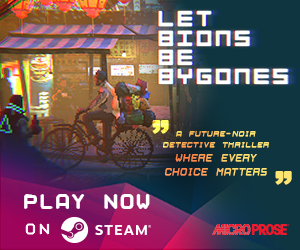
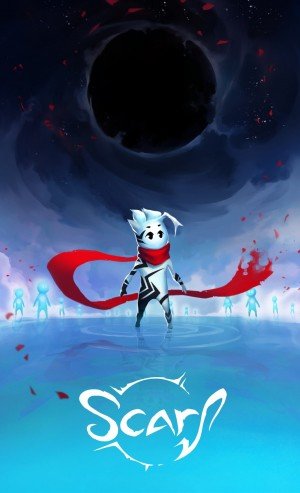





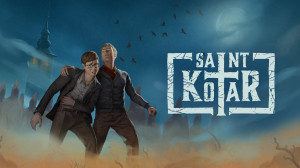



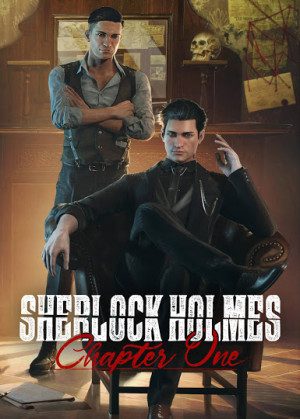

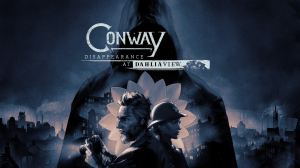




__small.jpg)

